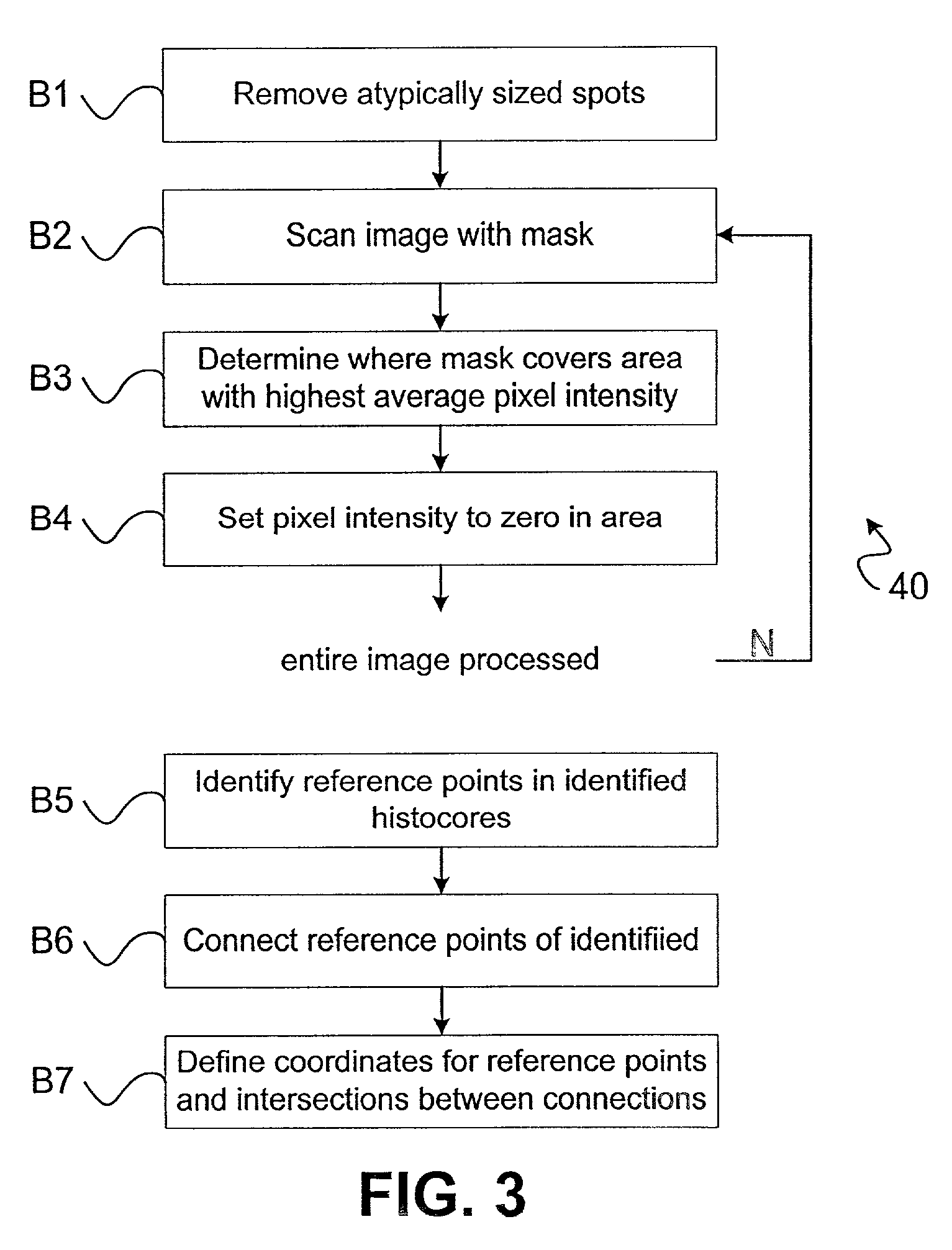Systems and methods for automated analysis of cells and tissues
a technology of cells and tissues and automated analysis, applied in the field of systems and methods for automated analysis of cells and tissues, to achieve the effects of rapid assessment of the prognostic benefit of biomarkers, easy optical analysis of array of biological samples, and increased applicability
- Summary
- Abstract
- Description
- Claims
- Application Information
AI Technical Summary
Benefits of technology
Problems solved by technology
Method used
Image
Examples
example 1
Construction of Tissue Microarrays for a Survival Analysis of the Estrogen Receptor (ER) and HER2 / neu and for Analysis of Nuclear Associated Beta-catenin
[0108]Tissue microarray design: Paraffin-embedded formalin-fixed specimens from 345 cases of node-positive invasive breast carcinoma were identified. Areas of invasive carcinoma, away from in situ lesions and normal epithelium, were identified and three 0.6 cm punch “biopsy” cores were taken from separate areas. Each core was arrayed into a separate recipient block, and five-micron thick sections were cut and processed as previously described (Konenen, J. et al., Tissue microarrays for high-throughput molecular profiling of tumor specimens, (1987) Nat. Med. 4:844–7). Similarly, 310 cases of colon carcinoma were obtained and arrayed, as previously described (Chung, G. G. et al., Clin. Cancer Res. (In Press)).
[0109]Immunohistochemistry: Pre-cut paraffin-coated tissue microarray slides were deparaffinized and antigen-retrieved by press...
PUM
| Property | Measurement | Unit |
|---|---|---|
| thickness | aaaaa | aaaaa |
| diameter | aaaaa | aaaaa |
| diameter | aaaaa | aaaaa |
Abstract
Description
Claims
Application Information
 Login to View More
Login to View More - R&D
- Intellectual Property
- Life Sciences
- Materials
- Tech Scout
- Unparalleled Data Quality
- Higher Quality Content
- 60% Fewer Hallucinations
Browse by: Latest US Patents, China's latest patents, Technical Efficacy Thesaurus, Application Domain, Technology Topic, Popular Technical Reports.
© 2025 PatSnap. All rights reserved.Legal|Privacy policy|Modern Slavery Act Transparency Statement|Sitemap|About US| Contact US: help@patsnap.com



